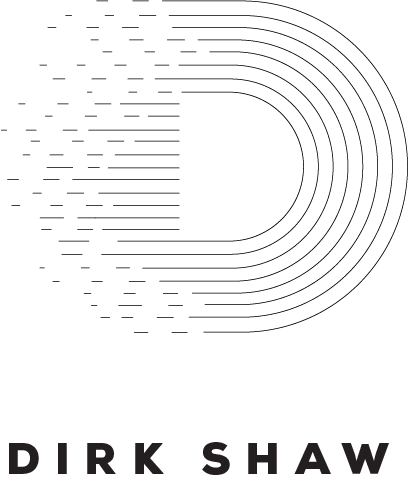Q&A On My Approach To StoryTelling

Originally published by Wayin.
Marketing used to conjure images of men like Don Draper, dreaming up catchy campaigns to grab consumers’ attention. In today’s world, it’s all about data. We sat down with Dirk Shaw, partner and chief strategist at the marketing agency Dispatch, to talk about data-driven storytelling.
Here’s a look at how Dispatch uses the Wayin platform to help develop everything from audience insights and client pitches to interactive content pages and data visualizations.
Q: TELL US A LITTLE ABOUT YOUR BACKGROUND AND APPROACH TO DATA-DRIVEN STORYTELLING.
A: I previously worked at Ogilvy running social practices for major accounts like Ford, where I saw firsthand the importance of data. Upon arriving at Dispatch, one of my first charters of business was developing fully-integrated, participatory marketing platforms for Dispatch’s clients that are concepted around big data.
To help facilitate the data capture, Dispatch formed a partnership with Wayin. The platform allows us to understand the nuances in behaviors across demographics so we can help our clients create authentic stories and grow participation. The more you can relate to the people you’re trying to reach, the more authentic and creative you can be for your clients.
Q: CAN YOU GIVE AN EXAMPLE OF HOW YOU USED WAYIN TO INFORM AND LAUNCH A CAMPAIGN FOR ONE OF YOUR CLIENTS?
A: Shimano is a great example. Mountain-biking is a very secular and diverse sport. We’re able to use data to understand mountain biking, culture, and interests across North America. The Wayin platform lets us do a social analysis and provides a deep understanding of where and how people are participating in the mountain-biking community. For Shimano, we analyzed conversations and set up trackers to follow the brand conversation. Then, we looked at broader conversation trends. What hashtags are people using? What are they saying about the brand? Is it positive or negative?
We can do competitive analyses to see how many conversations are happening, which gives us a starting baseline. We often uncover regional trends — such as, the southwest is not as into enduro freerides as the northwest — which lets us align different activations in different markets. We can identify who the influencers are, filter and sort by disciplines, and target and launch highly relevantcampaigns to activate the community.
Q: WHEN MOST PEOPLE THINK OF AN AGENCY DEVELOPING A CAMPAIGN CONCEPT, THEY IMAGINE A GROUP OF CREATIVES HUDDLED UP IN A ROOM BRAINSTORMING, SURROUNDED BY WHITEBOARDS AND WHISKEY GLASSES. HOW DOES DISPATCH APPROACH PITCHING?
A: We start with the data. Ideas are great, but not every budget is large enough to do all the things you want to do. Starting with data makes us feel more confident in pitching ideas.
For example, for one motorcycle client, we identified that fashion and style are the biggest topics within the “cafe racer” category. We were able to position around that instead of racing. It led us to create an experience that felt more “hipster” than we would’ve previously done. That knowledge is invaluable as we think about storytelling for our clients.
I call it “defensible creative.” We can tell clients: “You think this, but your audience is actually saying this.” The data gives you a way to defend it; these are real people and real conversations, not just made up personas.
Q: PR IS SUCH A HUGE PART OF THE MARKETING MIX, AND IT’S ALWAYS BEEN DATA-DRIVEN. HOW DOES YOUR AGENCY APPROACH THAT VEHICLE USING THE WAYIN PLATFORM?
A: Dispatch recently published an analysis of social media conversations around the brands, sponsors and riders involved in the 2016 Tour de France, effectively showcasing Wayin’s real-time data visualization with Dispatch’s prowess in experiential and social marketing.
Q: WHAT DO YOU SEE AS YOUR BIGGEST OPPORTUNITIES FOR GROWTH LOOKING INTO 2017 AND BEYOND?
A: As we think bigger and move into next phase of growth, tactics are so fluid. What I’ve learned in working with marketers over the years and myself as a planner, is that it’s not about knowing social or Snapchat or the latest channel. If you start there, you miss the bigger opportunity which is the audience.
Dispatch can help a brand like Shimano or Honda answer: “How do we get more people to ride our bikes or our motorcycles?” It’s not about speaking to same exact audience within the active lifestyle group and cannibalizing from someone else. It’s about growing the overall audience.
We can use data to find the place where people are a good target and design an experience for them. For example, we might uncover a hipster audience that thinks of their easy-ride bike as an accessory to their lifestyle, and we might create a ride event with a barber and an espresso truck. Data is what gives us the insight, to not just cannibalize existing bikers but to grow the market.
Bottom line: Tactics are secondary, audience is first.
